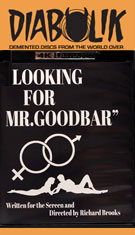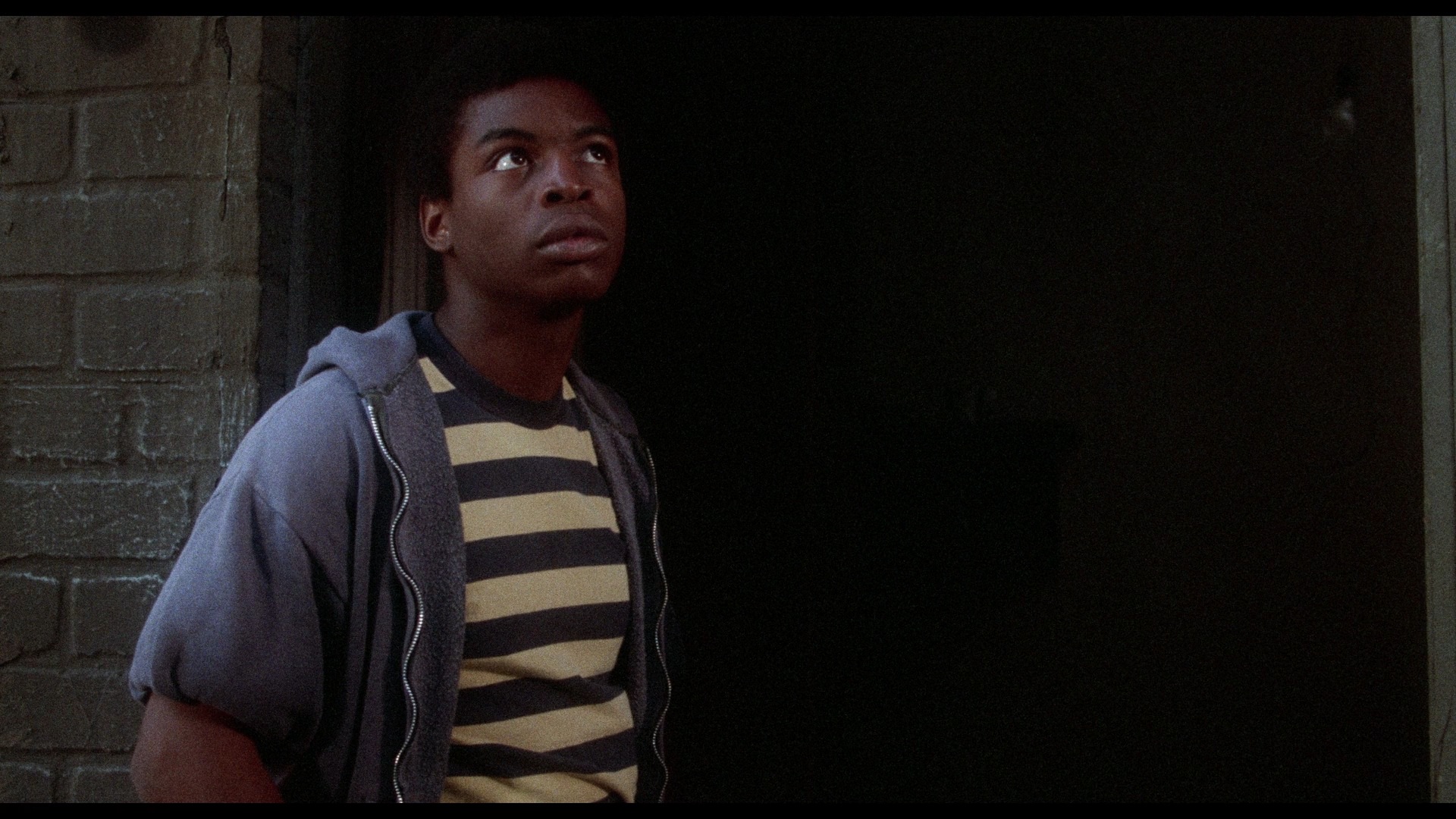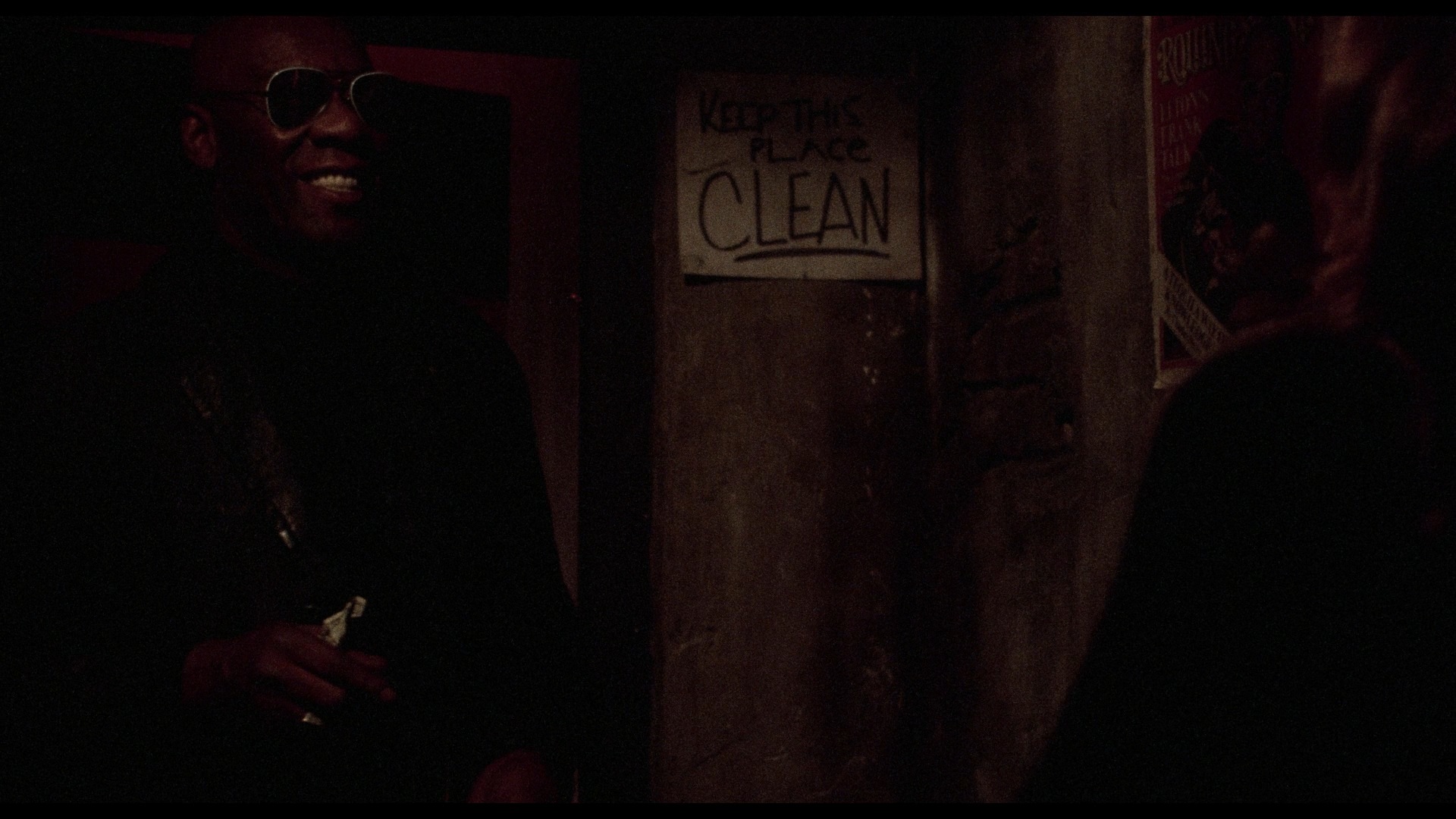



 release and a touchstone title for the singles bar and sexual liberation culture of the late ‘70s ever since, this somewhat loose adaptation of the bestselling novel by Judith Rossner is based on the same true crime case that became
release and a touchstone title for the singles bar and sexual liberation culture of the late ‘70s ever since, this somewhat loose adaptation of the bestselling novel by Judith Rossner is based on the same true crime case that became  something of a cautionary tale. It also helped cement the stardom of lead Diane Keaton, who won an Oscar for her performance the same year in Annie Hall, and introduced numerous familiar actors in their first roles under the guidance of director Richard Brooks (who would only return to make two more films in the ‘80s, neither of them hits). Looking for Mr. Goodbar became a perennial favorite on VHS and cable TV (less so via its very heavily sanitized network television airings), with its infamous, horrifying final few minutes sometimes getting it classified as a covert horror film and even earning it a spot as one of Stephen King’s top 20 scariest films of all time in his watershed 1981 book, Danse Macabre. Unfortunately as with numerous other films of the era, the film’s extremely song-heavy soundtrack proved to be a stumbling block to getting it released to other formats; apart from the occasional airing on channels like TCM and a brief streaming gig in a dated SD master (the source for a legally dubious Australian DVD), the film essentially went out of commission for decades. In late 2024, Vinegar Syndrome miraculously paved the way for the film to leapfrog its way directly to the UHD format with a Blu-ray disc as well, with all of its signature
something of a cautionary tale. It also helped cement the stardom of lead Diane Keaton, who won an Oscar for her performance the same year in Annie Hall, and introduced numerous familiar actors in their first roles under the guidance of director Richard Brooks (who would only return to make two more films in the ‘80s, neither of them hits). Looking for Mr. Goodbar became a perennial favorite on VHS and cable TV (less so via its very heavily sanitized network television airings), with its infamous, horrifying final few minutes sometimes getting it classified as a covert horror film and even earning it a spot as one of Stephen King’s top 20 scariest films of all time in his watershed 1981 book, Danse Macabre. Unfortunately as with numerous other films of the era, the film’s extremely song-heavy soundtrack proved to be a stumbling block to getting it released to other formats; apart from the occasional airing on channels like TCM and a brief streaming gig in a dated SD master (the source for a legally dubious Australian DVD), the film essentially went out of commission for decades. In late 2024, Vinegar Syndrome miraculously paved the way for the film to leapfrog its way directly to the UHD format with a Blu-ray disc as well, with all of its signature  songs intact apart from one extremely minor background change. Given their track record with freeing other cursed titles like Little Darlings and The Keep, hopefully the streak can continue with more forbidden fare like American Hot
songs intact apart from one extremely minor background change. Given their track record with freeing other cursed titles like Little Darlings and The Keep, hopefully the streak can continue with more forbidden fare like American Hot  Wax, Nocturna, and so on.
Wax, Nocturna, and so on. notorious sequence also pointed the way to early '80s films like Dressed to Kill, Cruising, and Windows among others, and even years later critics were trying to sort out whether this film could be considered sexist or homophobic (or both). Decades on it's very obvious the
notorious sequence also pointed the way to early '80s films like Dressed to Kill, Cruising, and Windows among others, and even years later critics were trying to sort out whether this film could be considered sexist or homophobic (or both). Decades on it's very obvious the  film isn't really either of those, given Brooks' oft-stated desire to promote social progress as seen in the sympathy for Keaton's character and the definite siding with disadvantaged children and their families (including a debut role here for LeVar Burton just before he broke through in Roots the same year). Where the waters probably got muddied was the occasionally bumpy storytelling; even at well over two hours, it feels like substantial material (especially involving Weld) has been left out with some jarring narrative hiccups as a consequence. The decision to occasionally inject fantasy sequences from Keaton's point of view (which are meant to repeatedly pull the rug out from under the viewer) is an odd one here that provides a few chuckles but also uses up quite a bit of running time that could have been used on a little more story clarity. That's a minor issue though given the film's extremely powerful impact overall, with Keaton's astonishing performance drawing out numerous great moments throughout the film as she faces off against a variety of characters with their own agendas.
film isn't really either of those, given Brooks' oft-stated desire to promote social progress as seen in the sympathy for Keaton's character and the definite siding with disadvantaged children and their families (including a debut role here for LeVar Burton just before he broke through in Roots the same year). Where the waters probably got muddied was the occasionally bumpy storytelling; even at well over two hours, it feels like substantial material (especially involving Weld) has been left out with some jarring narrative hiccups as a consequence. The decision to occasionally inject fantasy sequences from Keaton's point of view (which are meant to repeatedly pull the rug out from under the viewer) is an odd one here that provides a few chuckles but also uses up quite a bit of running time that could have been used on a little more story clarity. That's a minor issue though given the film's extremely powerful impact overall, with Keaton's astonishing performance drawing out numerous great moments throughout the film as she faces off against a variety of characters with their own agendas.  theater. The DTS-HD MA 2.0 English mono track is quite punchy as well with the plentiful songs sounding great, especially the two uses of The O'Jays' "Back Stabbers." Optional English SDH subtitles are provided, and it's worth noting that the initial pressing had a flaw that caused the UHD to stop running on some players in Dolby Vision
theater. The DTS-HD MA 2.0 English mono track is quite punchy as well with the plentiful songs sounding great, especially the two uses of The O'Jays' "Back Stabbers." Optional English SDH subtitles are provided, and it's worth noting that the initial pressing had a flaw that caused the UHD to stop running on some players in Dolby Vision  playback but a replacement program was quickly instituted. A terrific new audio commentary by Gillian Wallace Horvat pulls together a great deal of research from Richard Brooks' papers at The Academy's Margaret Herrick Library and sheds light on the development of the project including the adaptation changes, the roundabout creation of the opening photo montage, interpretations of the story's moral stance (or lack thereof), Keaton's career, and lots more, including a particularly potent brief anecdote at the end. In "First Comes the Word: Richard Brooks and the Making of Looking for Mr. Goodbar (23m32s), Brooks biographer Douglass K. Daniel discusses the film in the context of the director's career, explains his own process of encountering and processing it, and shares some stories about the production including a funny bit about how Brooks communicated the intended look to Frayker during preproduction. A WFMT radio interview with Rossner by Studs Terkel (13m4s) from 1976 covers the state of singles bar culture, the author's perspective on her main character, the circumstances of the real-life inspiration, and a fascinating bit of insight about how the Vietnam War informed this cultural shift. The seven-part "Defining Autonomy: The Trial of Looking for Mr. Goodbar" (30m41s) is a thorough, spoken piece by Brent Cowley covering the intricate saga of trial following the film’s theatrical release in Provo, Utah, which seems completely absurd by any metric. The evocative, photo-driven theatrical trailer is also included along with three radio spots, while the limited edition packaging comes with a 40-page booklet featuring some very worthwhile essays by Marya E. Gates, Marc Edward Heuck, Elizabeth Purchell, and Jourdain Searles, covering everything from the film's place in second-wave feminism to its correlation between society's repressive treatment of gay and female members that plays a major role in the finale.
playback but a replacement program was quickly instituted. A terrific new audio commentary by Gillian Wallace Horvat pulls together a great deal of research from Richard Brooks' papers at The Academy's Margaret Herrick Library and sheds light on the development of the project including the adaptation changes, the roundabout creation of the opening photo montage, interpretations of the story's moral stance (or lack thereof), Keaton's career, and lots more, including a particularly potent brief anecdote at the end. In "First Comes the Word: Richard Brooks and the Making of Looking for Mr. Goodbar (23m32s), Brooks biographer Douglass K. Daniel discusses the film in the context of the director's career, explains his own process of encountering and processing it, and shares some stories about the production including a funny bit about how Brooks communicated the intended look to Frayker during preproduction. A WFMT radio interview with Rossner by Studs Terkel (13m4s) from 1976 covers the state of singles bar culture, the author's perspective on her main character, the circumstances of the real-life inspiration, and a fascinating bit of insight about how the Vietnam War informed this cultural shift. The seven-part "Defining Autonomy: The Trial of Looking for Mr. Goodbar" (30m41s) is a thorough, spoken piece by Brent Cowley covering the intricate saga of trial following the film’s theatrical release in Provo, Utah, which seems completely absurd by any metric. The evocative, photo-driven theatrical trailer is also included along with three radio spots, while the limited edition packaging comes with a 40-page booklet featuring some very worthwhile essays by Marya E. Gates, Marc Edward Heuck, Elizabeth Purchell, and Jourdain Searles, covering everything from the film's place in second-wave feminism to its correlation between society's repressive treatment of gay and female members that plays a major role in the finale.![]()